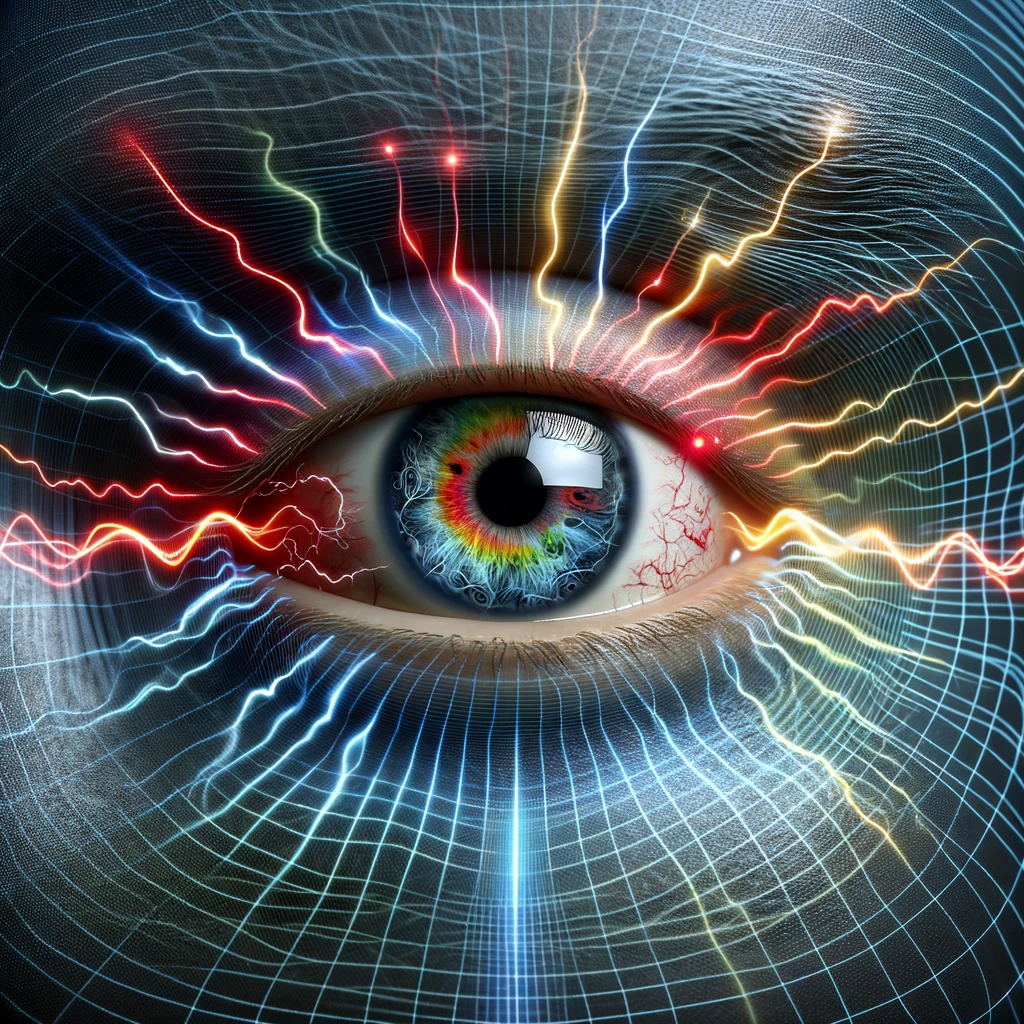In our modern world, the invisible threat of electromagnetic fields (EMFs) is ever-present, emanating from countless devices like mobile phones, computers, and LED lighting. While these technologies have become indispensable, there’s growing concern about their prolonged exposure, particularly their impact on eye health.

Understanding Electromagnetic Radiation and the Human Eye
The electromagnetic spectrum encompasses a range of wavelengths, including the visible light we see and the invisible ultraviolet and microwave radiation. Each type of radiation interacts differently with the human eye. Notably, organizations like the World Health Organization and the International Commission on Non-Ionizing Radiation have established guidelines to limit exposure and protect human health.
Blue Light: A Double-Edged Sword
Blue light, a high-energy component of the visible light spectrum, is emitted by the sun and artificial sources like screens and LED lights. While essential for health in natural forms, the artificial blue light can have detrimental effects, especially with prolonged exposure, leading to what experts term the ‘Blue Light Hazard.’
Eye Strain and Digital Devices
In the digital age, eye strain and fatigue are increasingly common, attributed to extended screen time. Devices like mobile phones and LED lights emit significant amounts of blue light, contributing to various eye health issues, including dry eye and eye irritation.
Biological Effects of Electromagnetic Exposure on the Eye
Exposure to EMFs can impact the delicate tissues of the eye, particularly the lens epithelial cells. Long-term exposure to electromagnetic radiation, especially from screens, has been linked to an increased risk of eye diseases and conditions.
Public Health and Safety Guidelines
Health organizations recommend several strategies to minimize eye damage from EMFs and blue light. These include using blue light filters, adhering to safe screen distances and brightness settings, and incorporating regular breaks during screen usage.
The Role of Occupational Health in Managing EMF Exposure
In the workplace, where exposure to EMF and blue light can be significant, it’s crucial to adopt occupational health strategies. These might include providing protective eyewear, optimizing workspace lighting, and educating employees about the risks and mitigation techniques.
Advancements in Eye Protection and Care
Technological advancements have led to innovative solutions for eye protection, such as blue light filters and specialized eyewear. Regular eye check-ups and adopting healthy screen habits are essential for maintaining eye health in the digital era.
Conclusion: Balancing Technology with Eye Health
As we continue to embrace technological advancements, it’s crucial to remain mindful of their impact on our eyes. By understanding the risks associated with EMFs and blue light, adopting protective measures, and maintaining a balance, we can enjoy the benefits of technology while safeguarding our eye health.

